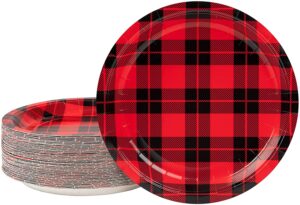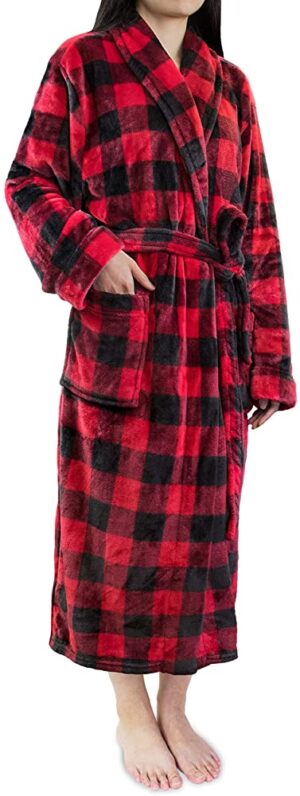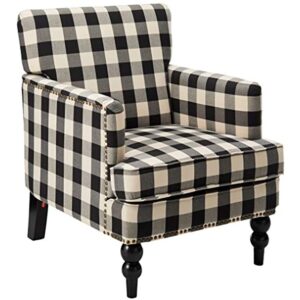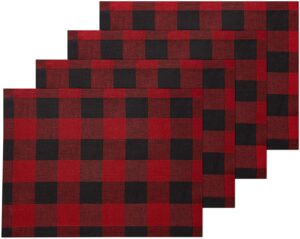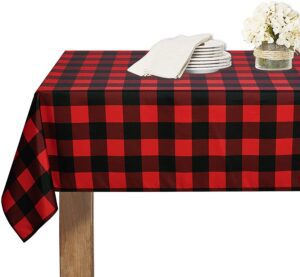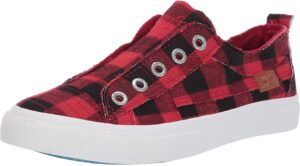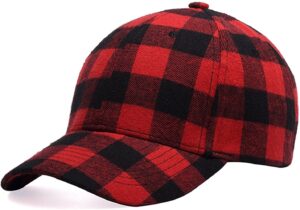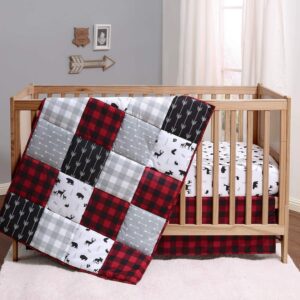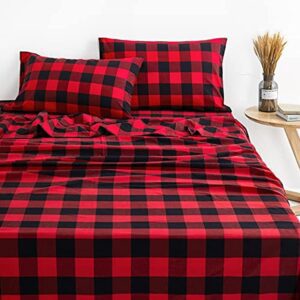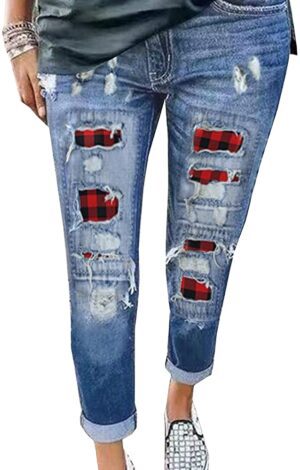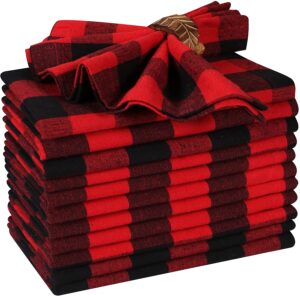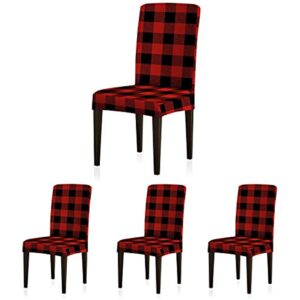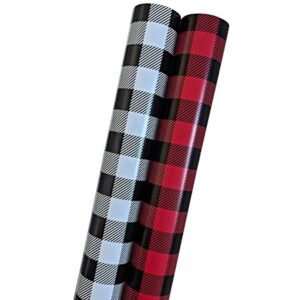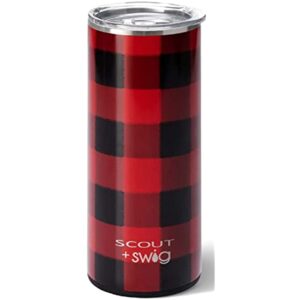Are you thinking about giving your dining chairs a makeover? Perhaps they have seen better days and it’s time to freshen them up with some new upholstery. But before you get started, you may be wondering how much fabric you actually need for the job. In this article, we will explore the factors that determine the amount of fabric required to reupholster a dining chair. By the end, you’ll have a clear understanding of how many yards you’ll need to bring your chairs back to life. So let’s get started!

Understanding the Basics of Reupholstering a Dining Chair
Reupholstering a dining chair involves the process of replacing the old fabric and padding on the chair with new materials. This can help breathe new life into an old, worn-out chair, giving it a fresh and updated look. The process requires some basic knowledge of upholstery techniques, as well as a few tools and materials. Understanding the basics of reupholstering can empower you to transform your dining chairs and create a customized and stylish space.
Definition of reupholstering
Reupholstering is the process of stripping off the existing fabric, padding, and any other materials from a chair and replacing them with new ones. It often involves removing the old fabric using tools like a staple remover or pliers, preparing the chair frame for new upholstery, adding new padding and fabric, and securing them in place using staples or other fastening methods. The goal is to give the chair a fresh and updated appearance while ensuring comfort and durability.

Why reupholstering is necessary
There are several reasons why reupholstering a dining chair may be necessary. Over time, the fabric on a chair may become worn, stained, or torn, making it unsightly. Replacing the fabric can instantly transform the look of the chair and make it appear newer and more appealing. Additionally, reupholstering allows you to choose fabric and padding that better suits your style and comfort preferences. It also allows you to extend the lifespan of your dining chair by replacing worn-out materials.
Common fabrics used for reupholstering
When reupholstering a dining chair, you have a wide range of fabric options to choose from. The choice of fabric depends on your personal preferences, the overall style of your dining space, and the level of durability and maintenance required. Some common types of fabric used for reupholstering include:
- Cotton: Cotton is a versatile and breathable fabric that comes in a multitude of colors and patterns. It is generally easy to maintain and can be a good choice for casual dining chairs.
- Linen: Linen offers a sophisticated and elegant look to dining chairs. It is known for its natural luster and soft texture, but it may wrinkle more easily than other fabrics.
- Vinyl: Vinyl is a synthetic material that resembles leather. It is durable, easy to clean, and resistant to stains, making it a practical choice for dining chairs in households with children or pets.
- Leather: Leather adds a luxurious and timeless touch to dining chairs. It is durable, stain-resistant, and becomes more beautiful with age. However, genuine leather can be quite expensive.
- Polyester: Polyester is a synthetic fabric that is known for its durability and resistance to wrinkling and fading. It comes in a wide array of colors and patterns and is a popular choice for dining chairs.
It is important to choose a fabric that not only complements the style of your dining space but also meets your specific needs in terms of durability, maintenance, and comfort.

Measuring Your Dining Chair for Upholstery
Accurate measurements are crucial when it comes to reupholstering a dining chair. These measurements will determine the amount of fabric and padding needed for the project. To measure your dining chair accurately, follow these steps:
How to accurately measure chair dimensions
- Measure the height: Start by measuring the height of the chair from the floor to the highest point, typically the top of the backrest.
- Measure the width: Measure the width of the chair by taking the distance between the outer edges of the widest point.
- Measure the depth: Measure the depth of the chair by placing the measuring tape against the backrest and measuring the distance to the front edge.
- Measure the seat: Measure the length and width of the seat cushion by placing the measuring tape against the inside edge of the seat and measuring to the other inside edge.
Different components of a chair to measure
When measuring your dining chair for upholstery, it is important to consider the different components that make up the chair. These include:
- Backrest: Measure the height and width of the backrest.
- Seat: Measure the length and width of the seat, as well as the thickness of the cushion.
- Arms: If your dining chair has arms, measure the height and width of each armrest.
- Skirt: If your dining chair has a skirt or fabric that extends down from the seat, measure the length and width of the skirt.
Tools needed to measure a chair
To accurately measure your dining chair, you will need a few basic tools, including:
- Measuring tape: Use a flexible measuring tape to accurately measure the dimensions of your chair.
- Pen and paper: Take notes of the measurements as you go to keep track of the dimensions.
- Optional: Digital calipers: Digital calipers can be used to measure small details, such as the thickness of the cushion or the diameter of buttons.
By taking accurate measurements of your dining chair, you can ensure that you have the right amount of fabric and padding for your reupholstery project.
Determining Fabric Amount Based on Chair Size
The size of your dining chair directly affects the amount of fabric needed for reupholstering. Larger chairs will require more fabric, while smaller chairs will require less. To estimate the fabric usage for different chair sizes, follow these guidelines:
How chair size affects fabric usage
The size of your dining chair plays a significant role in determining the amount of fabric required for reupholstery. Larger chairs with tall backs, wide seats, and bulky cushions will naturally require more fabric to cover all the surfaces. In contrast, smaller chairs with lower backs, narrow seats, and minimal padding will require less fabric.
Estimating fabric usage for different chair sizes
To estimate the fabric usage for different chair sizes, you can use the following guidelines:
- Standard dining chair: A standard dining chair typically requires approximately 1.5 to 2.5 yards (1.4 to 2.3 meters) of fabric.
- Armchair: Armchairs with larger dimensions, such as those with high backs and wide armrests, may require around 4 to 6 yards (3.7 to 5.5 meters) of fabric.
- Wingback chair: Wingback chairs with their distinctive wing-shaped backrests may require 6 to 8 yards (5.5 to 7.3 meters) of fabric due to their larger size.
It is important to note that these are general estimates and the actual fabric requirement may vary depending on the specific design and dimensions of your dining chairs.
Adapting measurements for patterned fabrics
If you plan to use a patterned fabric for your dining chair upholstery, it is essential to take into account the fabric repeat. Fabric repeat refers to the distance it takes for the pattern to start repeating itself. When using patterned fabric, you may need more fabric to align the pattern correctly on each chair component, especially if you want a visually appealing and symmetrical result. To adapt your measurements for patterned fabrics, consider adding an additional 10 to 15% of fabric to your original estimate.
Taking into account the size of your chair and adapting the measurements for patterned fabrics will help ensure that you have enough fabric to complete your reupholstery project successfully.

Choosing the Right Fabric for Your Dining Chair
When it comes to choosing the fabric for your dining chair, there are several factors to consider. The choice of fabric should not only complement the overall aesthetics of your dining space but also be practical in terms of durability, maintenance, and comfort. To make an informed decision, keep the following factors in mind:
Different types of upholstery fabric
There is a wide range of upholstery fabric options available, each with its own unique characteristics. Some common types of upholstery fabric include:
- Cotton: Cotton is a natural fiber that is soft, breathable, and comfortable. It comes in a variety of colors and patterns, making it a versatile option for dining chairs. However, it may not be as durable as other fabrics and may fade over time.
- Linen: Linen is a natural fabric known for its elegance and lustrous appearance. It has a slightly textured surface and is highly breathable. However, linen can wrinkle easily and may require regular ironing.
- Polyester: Polyester is a synthetic fabric that offers durability, stain resistance, and high color retention. It is low maintenance and comes in a wide variety of patterns and textures. However, it may not have the same level of breathability as natural fabrics.
- Velvet: Velvet is a luxurious and soft fabric that adds a touch of elegance to dining chairs. It has a dense pile that gives it a distinctive sheen. However, velvet can be difficult to clean and may be prone to water stains.
- Microfiber: Microfiber is a synthetic fabric composed of tightly woven fibers. It is durable, stain-resistant, and easy to clean. Microfiber fabrics come in various textures and can resemble suede or leather. However, they may not have the same level of breathability as natural fabrics.
Consider the characteristics of each fabric type, such as its durability, stain resistance, breathability, and maintenance requirements, when choosing the right fabric for your dining chair.
Factors to consider when choosing fabric
In addition to the type of fabric, there are several other factors to consider when choosing upholstery fabric for your dining chair:
- Style: Think about the overall style and theme of your dining space. Choose a fabric that complements the existing décor and enhances the visual appeal of the room.
- Durability: Consider how often the dining chair will be used and by whom. If you have children or pets, opt for a fabric that is more resistant to spills and stains.
- Comfort: Pay attention to the texture and feel of the fabric. Select a fabric that provides a comfortable seating experience.
- Color: Choose a color that coordinates well with the rest of the room and complements your personal style. Keep in mind that lighter-colored fabrics may show stains more easily.
- Pattern: Decide whether you want a solid-colored fabric or a patterned one. Patterns can add visual interest to the dining chair but may require more fabric for alignment.
- Maintenance: Consider the maintenance requirements of the fabric. Some fabrics may be machine washable, while others may require professional cleaning.
By considering these factors, you can select the perfect fabric that not only enhances the appearance of your dining chair but also meets your practical needs.
Pros and Cons of common fabric options
Here is a summary of the pros and cons of common fabric options:
-
Cotton
- Pros: Soft, breathable, versatile, comes in a variety of colors and patterns.
- Cons: Less durable, may fade over time.
-
Linen
- Pros: Elegant, lustrous appearance, breathable.
- Cons: Prone to wrinkling, may require regular ironing.
-
Polyester
- Pros: Durable, stain-resistant, high color retention, low maintenance.
- Cons: May lack breathability of natural fabrics.
-
Velvet
- Pros: Luxurious, soft, adds elegance.
- Cons: Difficult to clean, prone to water stains.
-
Microfiber
- Pros: Durable, stain-resistant, easy to clean, comes in various textures.
- Cons: May lack breathability of natural fabrics.
Consider these pros and cons when making your fabric selection, and weigh them against your personal preferences and needs.
Getting Accurate Fabric Measurement
To ensure that you have enough fabric for your dining chair reupholstery project, it is crucial to calculate fabric measurements accurately. Follow these steps for precise measurements:
Steps to calculating fabric measurements
- Start by measuring the dimensions of each chair component, such as the backrest, seat, arms, and skirt, using the techniques mentioned earlier.
- Once you have all the measurements, add up the total length and width of each component to determine the total fabric length and width needed.
- To calculate the fabric measurement, consider the direction of the fabric pattern. If the fabric has a one-way pattern, you may need to align it in a specific direction, which could impact the yardage required.
- Round up the total fabric measurement to the nearest whole number to ensure you have enough fabric to account for cutting and sewing allowances.
Importance of including buffer in measurements
Including a buffer or extra fabric in your measurements is essential to account for any mistakes, miscalculations, or adjustments during the reupholstery process. Adding a buffer of approximately 10% to 20% to your fabric measurements will help ensure that you have enough fabric to complete the project without running short.
Common mistakes when measuring fabric
When measuring fabric for your dining chair upholstery, there are a few common mistakes to avoid:
- Not accounting for pattern repeat: If you are using a patterned fabric, it is important to consider the fabric repeat and adjust your measurements accordingly. Failure to account for this can result in misaligned patterns.
- Failing to include buffer: Forgetting to include a buffer or extra fabric in your measurements can lead to inadequate fabric coverage and, in some cases, the need to reorder fabric in the middle of the project.
- Misreading measurements: Ensure that you read the measurements accurately and record them correctly. Double-check your measurements before finalizing the fabric order.
- Not considering the direction of the pattern: Some fabrics have a one-way pattern, meaning that they need to be aligned in a specific direction. Failing to consider this can result in pattern inconsistencies on different chair components.
By being mindful of these common mistakes and following the steps for accurate fabric measurement, you can avoid unnecessary frustrations and ensure a successful reupholstery project.

Effects of Fabric Patterns on Material Needed
The use of fabric patterns can have an impact on the amount of material needed for reupholstering a dining chair. Understanding how patterns can impact fabric usage will help you plan your fabric order more effectively.
How patterns can impact fabric usage
When using patterned fabric for your dining chair upholstery, you need to take into account the pattern repeat and the alignment of the pattern on each chair component. Depending on the size and complexity of the pattern, you may need to use additional fabric to ensure that the pattern aligns correctly.
For example, a large-scale pattern may require extra fabric to ensure that each chair component has a matching and visually appealing pattern layout. On the other hand, a small-scale pattern may result in less fabric waste as the pattern repeats more frequently.
Matching patterns for visual appeal
Matching patterns on dining chair components can significantly enhance the visual appeal of the finished piece. To align the patterns correctly, you may need to cut and sew the fabric in specific directions or manipulate the fabric layout during the upholstery process. This requires careful planning and additional fabric to achieve the desired effect.
Incorporating fabric repeat into measurements
When measuring fabric for patterned upholstery, it is crucial to take into account the fabric repeat. Fabric repeat refers to the distance it takes for the pattern to start repeating itself. By measuring the fabric repeat and adapting your measurements accordingly, you can ensure that you have enough fabric to cover each chair component without the pattern looking disjointed or misaligned.
To incorporate fabric repeat into your measurements, calculate the length of the repeat and consider how many repeats are needed for each chair component. Multiply the length of the repeat by the number of repeats required, and add this measurement to your total fabric yardage calculation.
Taking into account the effects of fabric patterns on material needed will help you achieve a visually pleasing result and avoid any pattern inconsistencies on your dining chair upholstery.
Working with a Professional Upholsterer
While reupholstering a dining chair can be a rewarding and fulfilling DIY project, sometimes it is best to work with a professional upholsterer. Hiring a professional comes with several benefits and can ensure that your reupholstered dining chairs turn out perfectly.
Benefits of hiring a professional upholsterer
- Expertise and craftsmanship: Professional upholsterers have extensive knowledge and experience in the field. They understand the intricacies of reupholstering and can handle complex chair designs and fabrics.
- Time-saving: Upholstering a dining chair can be a time-consuming process, especially if you have limited experience. Hiring a professional can save you valuable time and effort.
- Quality results: Professional upholsterers have the necessary skills and tools to produce high-quality and long-lasting results. They have access to a wide range of fabrics and can ensure that the fabric is cut and aligned correctly for a visually appealing finish.
- Customization options: Working with a professional allows you to explore a wider range of customization options. They can help you choose the perfect fabric, style, and design for your dining chairs, ensuring that they match your aesthetic preferences and functional needs.
- Professional advice: Professional upholsterers can provide valuable advice and recommendations based on their expertise. They can guide you through the fabric selection process, suggest design enhancements, and offer maintenance tips to prolong the lifespan of your reupholstered dining chairs.
Cost of professional reupholstery services
The cost of professional reupholstery services can vary depending on several factors, including the size and complexity of the chair, the fabric chosen, the customization options, and the location and reputation of the upholsterer. It is best to request quotes from multiple upholsterers and compare their prices and services to ensure you are getting the best value for your money.
While professional reupholstery services may come at a higher cost compared to a DIY project, the quality results and peace of mind often make it a worthwhile investment.
How professionals determine fabric measurements
Professional upholsterers have the expertise to accurately determine the fabric measurements required for reupholstering a dining chair. They take into account the dimensions of each chair component, the desired pattern alignment, and any customization options.
Upholsterers may also have access to fabric calculators or industry-specific measurements standards that help them calculate the precise amount of fabric needed for each chair. Their experience and knowledge of different chair designs and fabric types allow them to optimize fabric usage and minimize waste.
When working with a professional upholsterer, they will guide you through the measurements and fabric selection process, ensuring that you have the appropriate amount of fabric for your reupholstery project.
DIY Reupholstering Tips and Techniques
If you are interested in tackling the reupholstery of your dining chairs as a DIY project, there are several tips and techniques to keep in mind. While each chair may have its own unique challenges, the following instructions and guidance will provide a general overview of the process:
Basic instructions for reupholstering a dining chair
- Prepare the chair: Start by removing the existing fabric, padding, and any other materials from the chair using a staple remover or pliers. Take note of the order in which the materials are removed.
- Inspect and repair the frame: Thoroughly inspect the chair frame and repair any loose joints or damaged parts. This ensures that the chair is structurally sound before adding new upholstery.
- Add new padding: If needed, replace the old padding with new foam or batting. Cut the new padding to fit the chair components and secure it in place using adhesive or spray adhesive.
- Cut the fabric: Measure and cut the fabric for each chair component, leaving enough excess to wrap around and secure with staples or other fasteners.
- Attach the fabric: Starting with the seat, pull the fabric taut and staple it to the underside of the chair. Work your way around each component, making sure to smooth out any wrinkles or creases.
- Secure the edges: Trim any excess fabric, leaving a border of approximately 1-2 inches (2.5-5 cm) to create a clean edge. Fold the fabric over the edges and staple it securely to the chair frame.
- Reattach any additional elements: If your dining chair has buttons, piping, or other decorative elements, carefully reattach them using appropriate techniques and tools.
- Inspect and trim: Once all the fabric has been attached, inspect the chair for any loose or uneven areas. Trim any excess fabric if necessary.
These basic instructions provide a general overview of the reupholstering process. It is essential to follow specific tutorials or seek professional guidance for your particular chair design and fabric type to ensure the best results.
Must-have tools and materials for DIY reupholstering
To successfully reupholster your dining chair, you will need a set of essential tools and materials. Here are some must-have items:
Tools:
- Staple gun and staples
- Staple remover or pliers
- Scissors or fabric rotary cutter
- Measuring tape
- Adhesive or spray adhesive
- Sewing machine (if applicable)
- Upholstery needles (if applicable)
Materials:
- Upholstery fabric of your choice
- Padding material (foam or batting)
- Upholstery thread
- Buttons, piping, or other decorative elements (if desired)
These tools and materials will help you successfully complete your DIY reupholstery project and achieve professional-looking results.
Common challenges and how to address them
Reupholstering a dining chair can come with its fair share of challenges. Here are some common challenges you may encounter during the process, along with tips to address them:
- Tight corners or curves: When stapling fabric around tight corners or curves, make small relief cuts in the fabric to help it lay flat and prevent puckering or wrinkling.
- Complex chair design: Chairs with intricate designs or multiple components may require additional time and attention to ensure proper alignment and fabric coverage. Take your time and follow specific tutorials for complex chair designs.
- Pattern alignment: Aligning patterns can be particularly challenging, especially when working with multiple chair components. Measure and mark the fabric carefully to ensure the pattern lines up correctly across all parts of the chair.
- Staple removal difficulties: Removing old staples can be time-consuming and may require patience. Use a staple remover or pliers to carefully remove each staple, taking care not to damage the chair frame.
- Fabric wrinkles or creases: Ensure the fabric is pulled taut and smooth out any wrinkles or creases as you staple it to the chair frame. A steam iron can be used to help remove stubborn wrinkles from certain fabric types.
By being prepared for these common challenges and having the necessary tools and knowledge, you can overcome them and successfully reupholster your dining chairs.
Maintaining Your Reupholstered Dining Chair
After investing time and effort into reupholstering your dining chairs, it is important to take proper care of them to ensure their longevity and appearance. Here are some tips for cleaning and maintaining your reupholstered dining chairs:
Cleaning and maintenance tips for reupholstered chairs
- Read the fabric care instructions: Different fabrics have specific cleaning requirements. Check the care instructions provided by the fabric manufacturer and follow them carefully.
- Regular vacuuming: Vacuum your upholstered chairs regularly to remove dust, dirt, and debris. Use a brush attachment to gently clean the fabric surface and crevices.
- Spot cleaning: Promptly attend to any spills or stains to prevent them from setting into the fabric. Blot the stain gently with a clean cloth or paper towel, taking care not to rub it into the fabric.
- Professional cleaning: Depending on the fabric type, it may be necessary to have your dining chairs professionally cleaned occasionally. Professional cleaning services are best equipped to handle delicate or difficult stains.
- Avoid direct sunlight: Prolonged exposure to direct sunlight can cause the fabric to fade or weaken over time. Position your dining chairs away from direct sunlight or consider using window coverings to protect them.
- Protect from pets and children: If you have pets or young children, it is advisable to use protective covers or blankets on the dining chairs to prevent stains, scratches, or other types of damage.
- Rotate cushions: If your dining chair has removable cushions, rotate them regularly to distribute wear and tear evenly.
By following these cleaning and maintenance tips, you can keep your reupholstered dining chairs looking beautiful and extend their lifespan.
How to prevent damage to your reupholstered chair
Preventing damage to your reupholstered dining chairs is crucial to ensure their long-term performance and appearance. Here are some preventive measures to consider:
- Use chair covers: Consider using removable chair covers for added protection, especially during special occasions or when the chairs are not in use.
- Be mindful of sharp objects: Avoid placing sharp objects or tools on the chairs that could puncture or tear the fabric.
- Educate family members: Teach family members and guests to treat the chairs with care and avoid behaviors that could cause damage, such as jumping or standing on the chairs.
- Implement regular maintenance routines: Regularly inspect the chairs for any signs of wear or damage. Address any issues promptly to avoid further deterioration.
By being proactive in preventing damage and taking care of your reupholstered dining chairs, you can enjoy their beauty and functionality for years to come.
Lifespan of a reupholstered dining chair
The lifespan of a reupholstered dining chair depends on several factors, including the quality of materials used, the level of care and maintenance provided, and the frequency of use. On average, a well-maintained and properly reupholstered dining chair can last anywhere from 10 to 20 years or even longer.
Regular cleaning, inspections, and prompt repairs can significantly extend the lifespan of your reupholstered chairs. Consider reupholstering your dining chairs using high-quality materials and professional craftsmanship to ensure their longevity.
Conclusion
Reupholstering a dining chair can be a satisfying and rewarding project that allows you to customize your furniture and breathe new life into old pieces. Whether you choose to embark on a DIY upholstery adventure or hire a professional, understanding the basics of reupholstering, taking accurate measurements, selecting the right fabric, and maintaining your reupholstered dining chairs are essential for successful results.
In this article, we discussed the definition and importance of reupholstering, common fabrics used for upholstery, measuring techniques, fabric estimates based on chair size, choosing the right fabric, working with professionals, DIY tips and techniques, chair maintenance, and the potential lifespan of reupholstered dining chairs.
By following these guidelines and recommendations, you can confidently take on your dining chair reupholstery project, transforming your chairs into beautiful, comfortable, and personalized pieces that will bring joy and style to your dining space for years to come.
Additional resources for further learning
- Upholstery Basics: How to Reupholster a Chair – A comprehensive video tutorial on reupholstering a chair from This Old House.
- The Spruce Crafts: Reupholstery 101 – A detailed guide to reupholstering furniture, including step-by-step instructions and tips.
- HGTV: How to Reupholster a Dining Chair – A visual guide on reupholstering dining chairs, featuring detailed instructions and expert tips.



